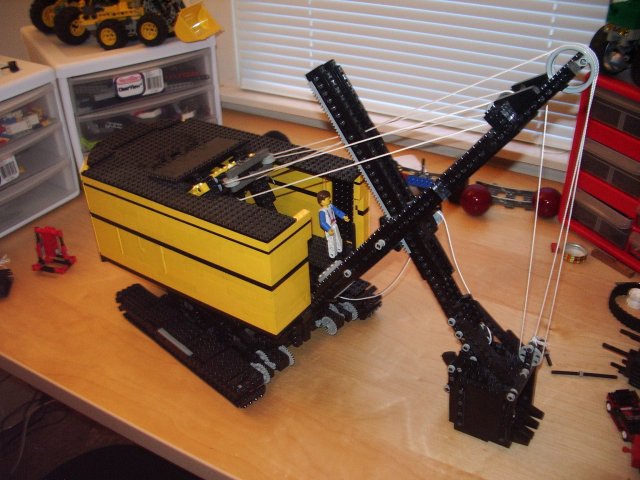
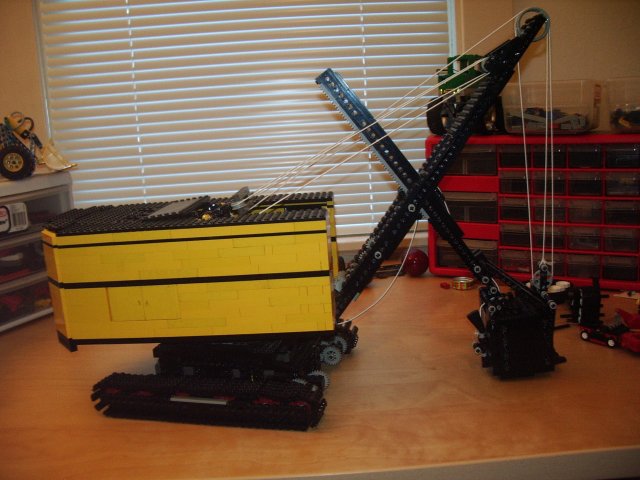
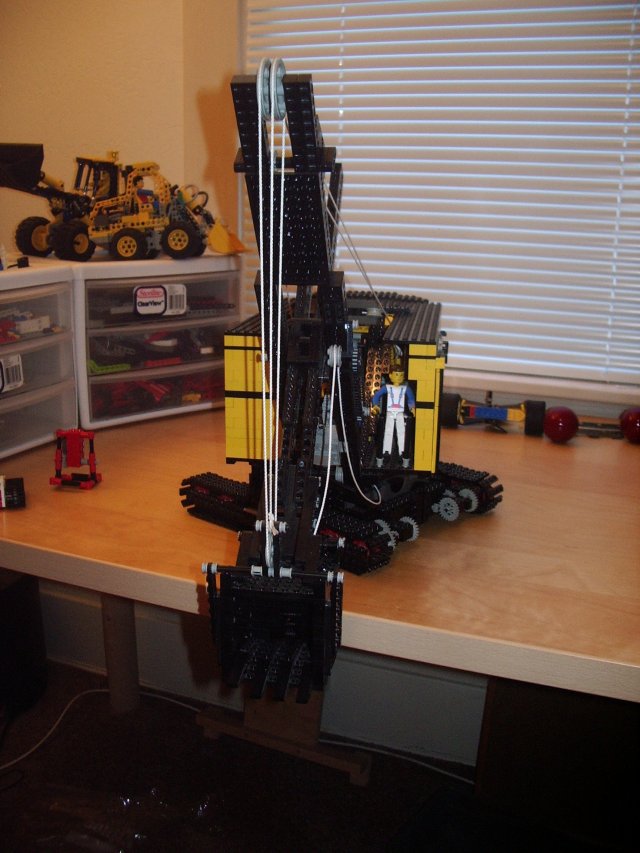
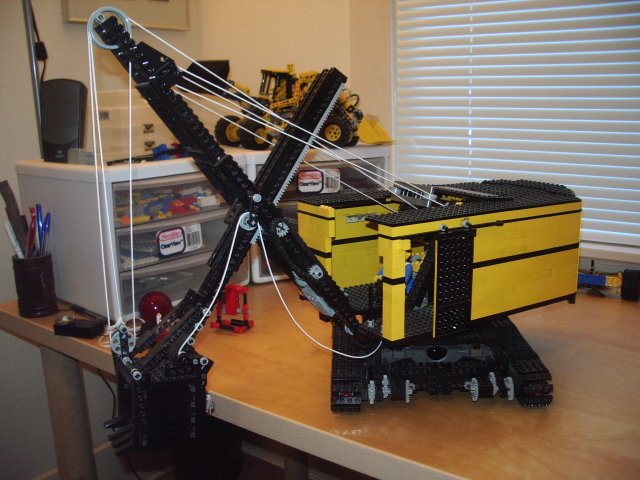
This is a 1:20 scale model of an early 20th century cable shovel. I built it based on pictures found in a book Marion Power Shovel Company.
I built this model over several months in 2001. It was displayed at several BayLUG shows as well as the Lego Road Show stop in Sacramento in 2002; yet for some reason I never took any good pictures of it... The display in Sacramento was outdoor, on a very dry graveled area: as a result all the models displayed there received a thick layer of dust. The shovel was hit badly as I left the various panels open to enabble the visitors to see the inside... Once back home, I found it impossible to clean the inside without taking it appart and I did not want to run it for fear of sand particle getting into the gears and motors. So it sat on a shelf for over two years, until I finaly decided it was time to take it appart. This is when I took the following pictures (on several of them you can clearly see all the dust that accumulated over time).
The model was fully functional:
Here are some overal views of the shovel:




The tracks were made from the old pre-Technic gears and chains that were sold in Europe in the 1970s. Each link was covered by a 1x4 plate to give it a more scale appearence. The tracks were driven through a 1:27 gear train. Like on the real machines, the gears were exposed.
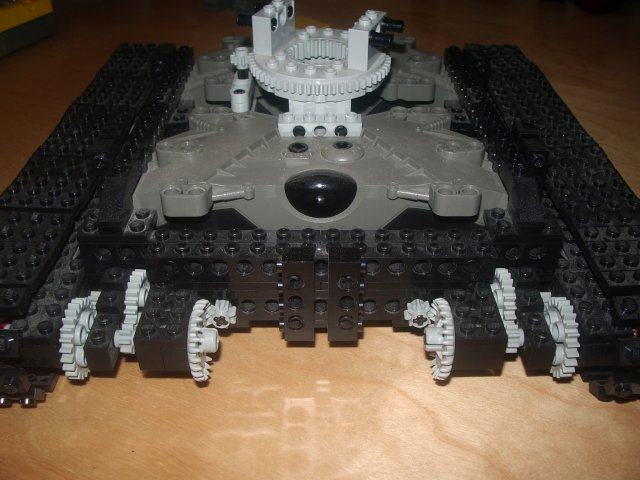
The bucket is filled from the front while digging and emptied from the back through the dump gate. The following picture shows the bucket opened for dumping:
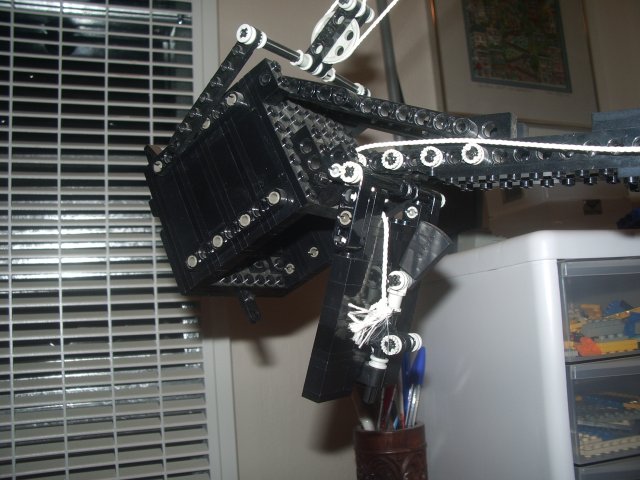
Notice the weight brick used to help the pin lock back into the bucket. This mechanism proved to be the most difficult part of this model, for two reasons:
The crowding engine (a small steam engine on the real machine) moved the dipper arm in and out through a rack and pinion mechanism, as shown in the next picture:
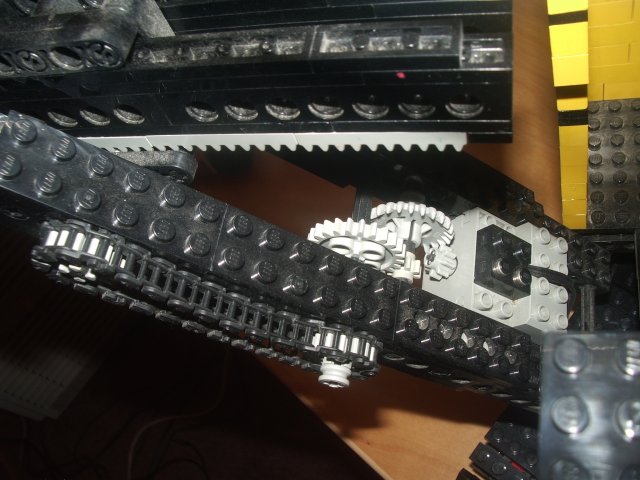
Here are some pictures showing the content of the house:
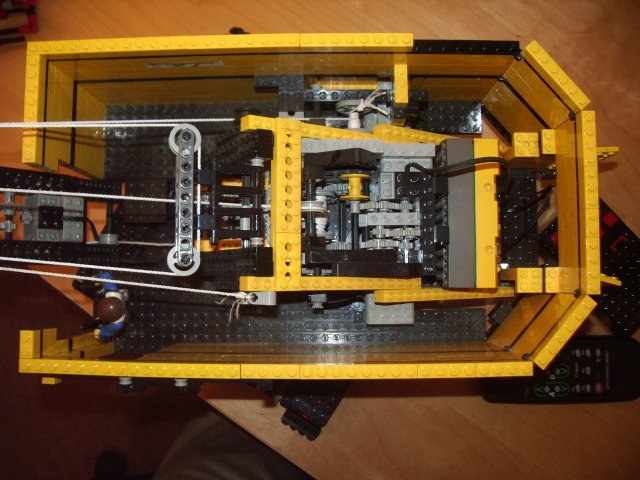
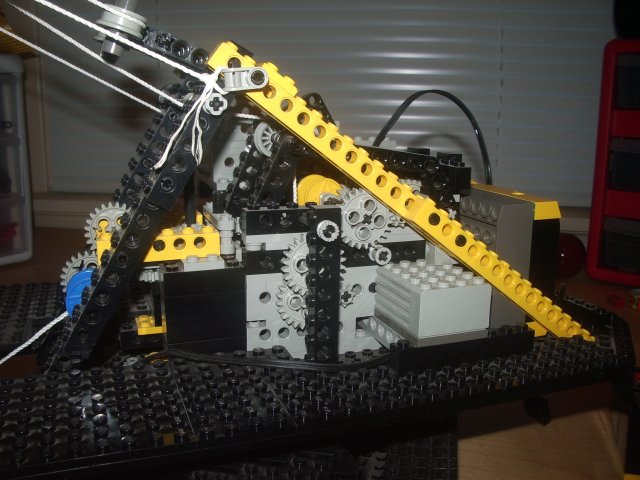
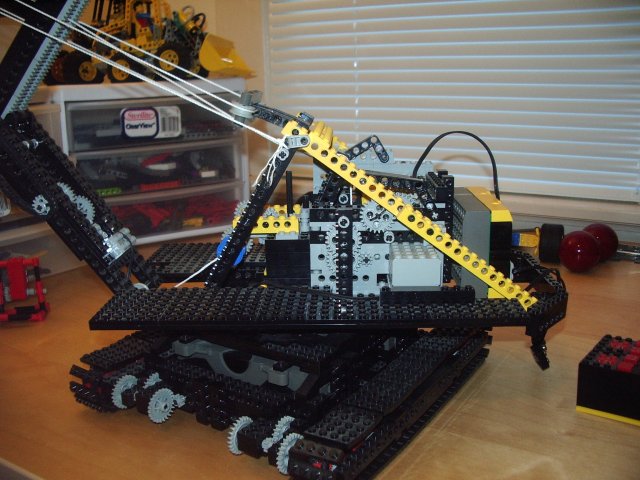
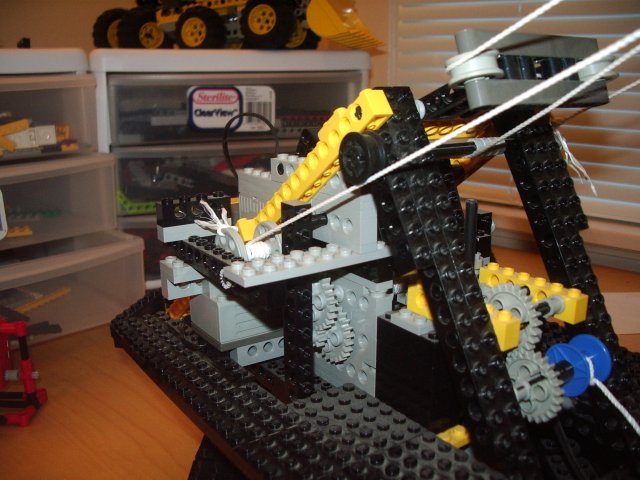
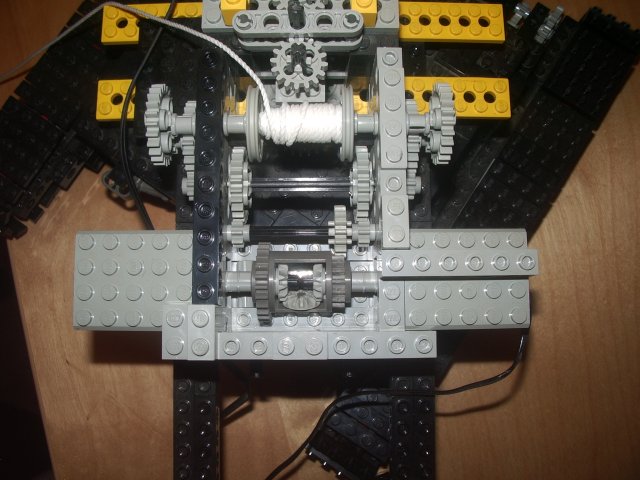
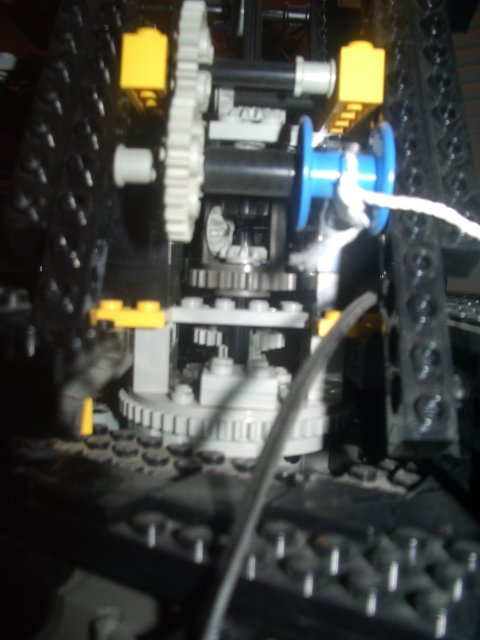
The structure of machine is based on a picture of the real one taken at the Marion factory before the house was installed.
Notice the vertically mounted differential: it is used prevent the slewing motion from interfering with the bucket latch mechanism. Since the motor driving the latch is located in the base its motion is transmitted through the center of the slewing ring. As a result, without the differencial, when the upper works slew, the latch winch would wind or unwind.
The set of pictures shows the undercarriage. It was built around two Manas reciever / dual-motor blocks. They provided both strength and weight but had two small problems:
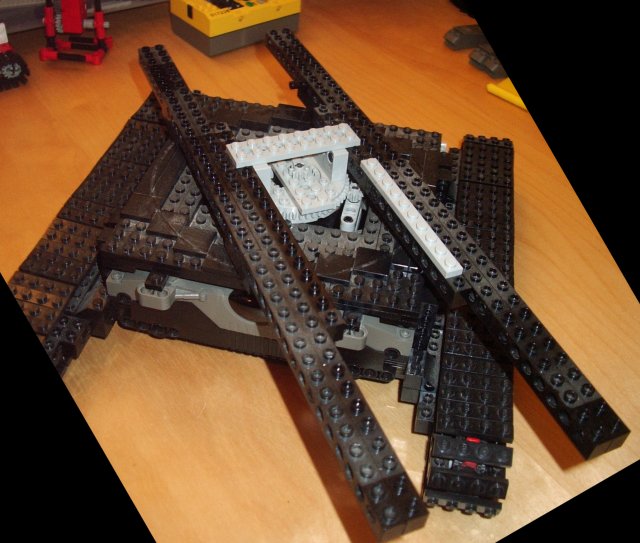
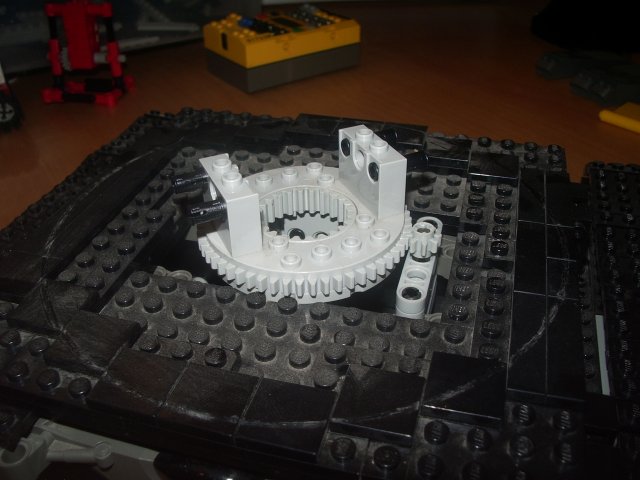

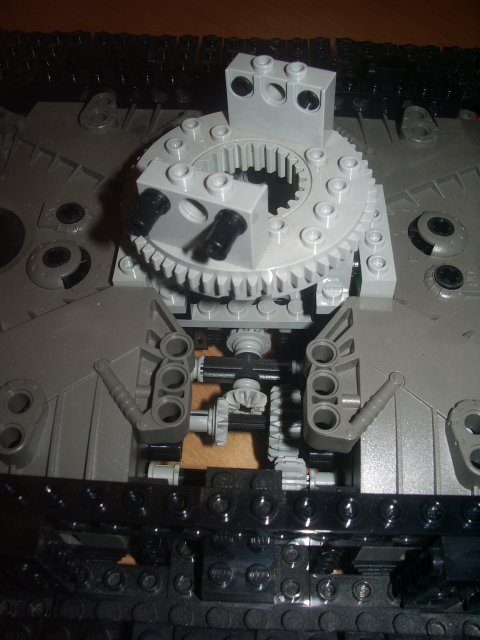
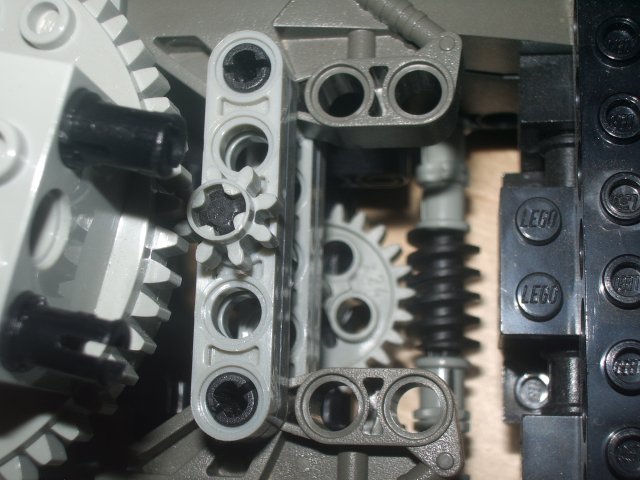
This page is Copyright 2004, David Wegmuller. For website feedback, send a message to webmaster at wegmuller dot org. For content feedback, send a message to david at wegmuller dot org. Lego and Lego Technic are trademarks of the Lego Group. This website is not related, sponsored or endorced by the Lego Group.